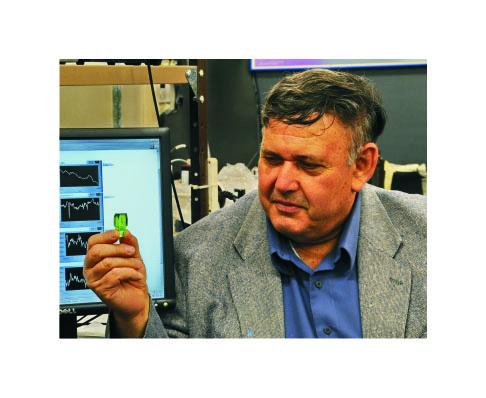Citation:
M Ivker and AJ Agranat. 2004. “Resistance degradation due to interstitial hydrogen in photorefractive potassium lithium tantalate niobate single crystals.” J. Applied Physics 96 (11), Pp. 6405 - 6408.
Abstract:
Resistance degradation in potassium lithium tantalate niobate (KLTN) doped with iron and titanium was measured in a single sample containing various concentrations of interstitial hydrogen. In this crystal the degradation arose from the migration of interstitial hydrogen and not oxygen vacancies, as reported in previous research. Interstitial hydrogen and oxygen vacancy defects both arise to compensate the valence shortfall of the substitutional iron impurities and the thermodynamic balance between the two compensation mechanisms can be controlled using reaction chemistry techniques. Through appropriate annealing treatments a single crystal of KLTN was prepared in three states: hydrogen-rich oxidized, hydrogen-poor reduced, and hydrogen-rich reduced. The characteristic degradation times for the three cases were 29, 2710, and 26 min, respectively. The degradation rate is correlated with hydrogen concentration and not oxidation state of the crystal. Infrared absorption from near the two electrodes of the hydrogen-rich reduced crystal after degradation confirmed polarization of the hydrogen concentration. Electrocoloration was also found to correlate with hydrogen-it was observed in both hydrogen-rich states, but was absent from the hydrogen-poor crystal. (C) 2004 American Institute of Physics.See also: Group Publications, Before 2005


